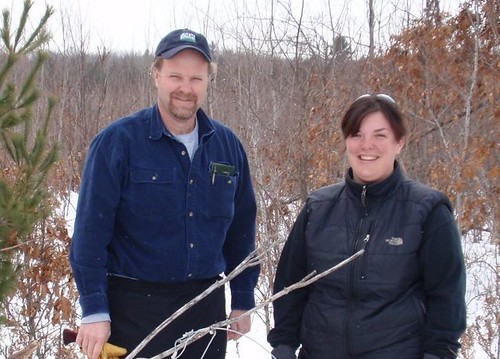
Wolves have an intrinsic value among Ho-Chunk people. The Nation is dedicated to ensuring that wolves remain on the landscape to preserve their role in Ho-Chunk culture for future generations.
Varying stories of wolves portray the animal as being a sacred keeper of water, and an ideal messenger due to its speed, endurance, and voice. Ho-Chunk stories of creation indicate there were four wolf brothers: Blue Wolf, controller of the day; Black Wolf, controller of the night; White Wolf, commander all things that are holy; and Gray Wolf, which now lives on the earth’s surface as a guardian of mankind. Protecting and managing the species of Ho-Chunk aboriginal lands promises a natural harmony for Ho-Chunk people today and for future generations.
Ho-Chunk Nation, one of eleven federally recognized tribes in Wisconsin, partnered with USDA’s Wildlife Services (USDA-WS) to capture wolves for monitoring purposes. Ho-Chunk Nation has proven to be a valuable partner in wolf monitoring and management activities.
Ho-Chunk Nation Division of Natural Resources (HCN DNR) Wolf Management Program was initiated with the receipt of a U.S. Fish and Wildlife Service Tribal Wildlife Grant in 2004. Since the development of the program, HCN DNR has been able to expand and sustain the program with a Bureau of Indian Affairs Endangered Resource Management grant. Through these grants, HCN DNR entered into a cooperative service agreement with USDA-WS to provide operational support, including trapping and immobilization of captured wolves. The field work was conducted by USDA-WS, HCN DNR, and Wisconsin Department of Natural Resources (WDNR) personnel.
Field work was conducted in February, June, and September in Clark, Eau Claire, and Jackson Counties in west central Wisconsin. The project focused on wolf packs associated with Ho-Chunk tribal lands and includes: Brushy Ridge, Eau Claire River, Dickerson Road, Noch Hanai, and Wildcat Mound packs. Four wolves were caught during the project, three males and one female. Photos, area maps, and capture stories have been provided to Ho-Chunk Nation Traditional Court for review to select culturally significant names for the individual wolves. Once captured the wolves were immobilized so scientific data could be collected, a radio collared fitted, and a pit tag inserted under the skin. The wolves were then released and HCN DNR has contracted WDNR to conduct aerial surveys to monitor the wolves. The flight data will help determine territorial boundaries, pack size, dispersals, and other biological information. Data from the monitor trapping project will be shared with partners such as WDNR and will aid in making sound management decisions.

